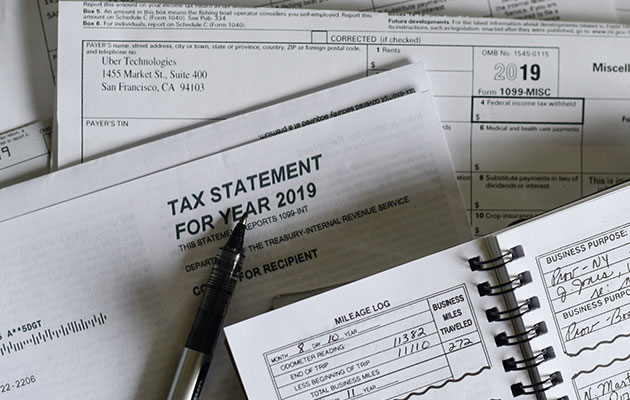-
Articles
The Emergence of Special Purpose Acquisition Companies in Asia
1. Brief Introduction on Special Purpose Acquisition Companies
A special purpose acquisition company (“SPAC”) is a company formed strictly for the purpose of raising capital through an initial public offering (“IPO”) to acquire one or more existing companies, whereby the identity of the target company is not revealed to the investors until after the IPO has taken place. The capital raised by the SPAC in an IPO is held in a trust account until the desired acquisition of the target company is made. Due to the fact that a SPAC is only a shell company (i.e. it does not engage in any business operation and has no assets other than the money raised through its IPO), they are also commonly referred to as a “blank cheque company”.
The SPAC has no other assets or redeeming features at the onset; therefore, the founders/sponsors of the SPAC are the main attraction when looking to source funds from investors during the initial stage. In such regard, the founders of a SPAC provide the initial capital for the company, and generally consist of institutional investors with expertise in a particular industry or business sector who rely on their expertise to identify a profitable target company in that particular area. On the other hand, investors in a SPAC may range from private equity funds to members of the general public. When forming a SPAC, the founders may often have at least one acquisition target in mind, but the identity of that target is not revealed to investors in order to avoid extensive disclosures during the IPO process (meaning that investors have no idea what target company they will be ultimately investing in).
A SPAC is generally subject to a two-year deadline, within which a completed acquisition of a target company must be made. In the case where a successful acquisition is not made within the two-year period, the SPAC shall be liquidated and the funds returned to the investors. Following a successful acquisition, the SPAC will be listed on the stock exchange of the jurisdiction in which it is located.
In recent years, SPACs have gained popularity as a potential liquidity option for many companies due to a shorter IPO timeframe than the traditional IPO timeline, which allows a company to go public and obtain an influx of capital quicker than it would have with a conventional IPO. In this respect, while the SPAC merger process with a target company may be completed in as little as three to four months, a conventional IPO can take up to six months to be completed.
2. Regulation on SPACs from a Thai Law Perspective
At present, there are no specific laws to regulate a SPAC in Thailand, although in May this year, the Thai Securities and Exchange Commission (the “SEC”) issued a statement to acknowledge the growing popularity of SPACs (and to explain what a SPAC is to the general public).1 At the moment, the SEC is still monitoring the feasibility of SPACs and, in such regard, there is no fixed timeline as to when it will decide to revise its existing rules to regulate SPACs in the future.
3. Regulation of SPACs in Other Jurisdictions
- 3.1. Singapore:
Following the conclusion of the public consultation on SPACs conducted in March 2021, the Singapore Exchange (the “SGX”) revised its listing rules to allow SPACs to be listed on the Mainboard of the Singapore Exchange Securities Trading Limited (the “SGX-ST”) by way of a primary listing, effective as of 3 September 2021, provided that the following key conditions are met:2
- (a) Must have the minimum market capitalisation of SGD 150 million (approximately USD 112 million);
- (b) At least 25% of the total amount of issued shares of the SPAC must be held by no fewer than 300 public shareholders at the time of listing;
- (c) Minimum IPO price per share shall be at least SGD 5 (approximately USD 3.70);
- (d) Upon listing on the SGX-ST, at least 90% of the gross proceeds raised from the IPO must be placed in an escrow account;
- (e) The acquisition of the target company must be completed within 24 months (two years) of the launch of the IPO, with an extension of up to 12 months (one year) permitted if certain prescribed conditions are fulfilled (i.e. a transition process known as “De-SPAC”);
- (f) Founders or sponsors of the SPAC must subscribe to at least 2.5% - 3.5% of the total amount of the IPO’s shares depending on the SPAC’s market capitalisation;
- (g) Moratoriums will apply at various stages, from the IPO stage to the De-SPAC stage, on the sponsor or founder’s shares;
- (h) All independent shareholders are entitled to redemption rights under the rules; and
- (i) Disclosure requirements during the De-SPAC process are the same as for a traditional IPO.
In this respect, Singapore’s decision to allow the listing of SPACs marks the beginning of a general acceptance towards alternative modes of acquiring private companies in Asia other than through the traditional IPO process.
- 3.2. Hong Kong:
Following the publication of the aforementioned SGX’s amended listing rules, in order to meet demands from companies expressing interest in exploring a SPAC listing in Hong Kong; the Stock Exchange of Hong Kong Limited, a wholly owned subsidiary of the Hong Kong Stock Exchange (the “HKEX”), published a consultation paper on creating a listing regime for SPACs in September 2021. The deadline for submitting feedback on proposals closed on 31 October 2021.
Some key features of the proposed Hong Kong SPAC listing regime are as follows:3
- (a) Must have the minimum market capitalisation of at least HKD 1 billion (approximately USD 130 million);
- (b) Only professional investors are eligible to invest in a SPAC prior to the De-SPAC process, meaning that investors not meeting the definition of a “professional investor” under the Securities and Futures Ordinance (Chapter 571 of the Laws of Hong Kong) will not be able to take part in the SPAC IPO or the trading of its securities until after the SPAC has completed the De-SPAC process;
- (c) Minimum IPO price per share shall be at least HKD 10 (approximately USD 1.30);
- (d) The SPAC’s shares and warrants must be distributed to a minimum of 75 professional investors, of which 30 must be ‘institutional professional investors’, and such institutional professional investors must hold at least 75% of the securities to be listed;
- (e) At least one of the SPAC promoters must be a company holding at least 10% of the ‘promoter shares’, with a valid Type 6 licence (advising on corporate finance) and/or a Type 9 licence (asset management) issued by the Securities and Futures Commission (the “SFC”);
- (f) There must be a minimum of 100 shareholders in the successor company, thus to ensure an adequate spread of shareholders;
- (g) Announcement of the De-SPAC process shall be made within 24 months (two years) of the launch of the IPO and must be completed within 36 months (three years) of the launch of the IPO; and
- (h) The target company that is acquired by a SPAC is subject to the same requirements as a company listing in Hong Kong via a traditional IPO.
Nonetheless, despite the HKEX’s willingness to develop the listing rules in response to the growing demand for SPACs, concerns have been raised by relevant stakeholders; who view the proposed listing rules under the HKEX to be more conservative and restrictive than the rules prescribed under the SGX listing regime.
In such regard, some key issues raised include the following:
- HKEX’s minimum market capitalisation requirement of at least HKD 1 billion (approximately USD 130 million) may result in excluding smaller buyout targets;
- HKEX’s restriction on investor suitability to exclude the participation of non-professional investors from taking part in the SPAC IPO and the initial trading of its securities is not present under the SGX’s listing rules (i.e. meaning that the SGX allows all investors to trade SPAC securities, and retail investors may participate in SPAC IPO); and
- HKEX’s requirement for at least one of the SPAC promoters to be licensed by the SFC is not present under the SGX listing regime (i.e. there is no such licensing requirement imposed on SPAC promoters under the SGX listing rules).
4. Conclusion
While SPACs maintain a heavy presence in the US, the same cannot be said in the Asian financial markets where it has only recently begun to emerge as a new phenomenon, as seen by the response of the relevant regulators in Singapore and Hong Kong. This not only reflects the demand for SPACs in Asia, but it is also an indicator of the adoption of a shared viewpoint among regulators that SPACs will have an important role to play in shaping the region’s capital markets in the future. Nonetheless, should SPACs become more regulated in the future, as with any other investment decisions, potential investors must exercise caution and be aware of the associated risks.
- 1 “SPAC as a New Phenomenon to Raise Capital Overseas/Abroad”, the Securities and Exchange Commission Thailand (dated 12 May 2021).(https://www.sec.or.th/TH/Template3/Articles/2564/120564.pdf)
- 2 Appendix 2 of the Proposed Listing Framework for Special Purpose Acquisition Companies (dated 2 September 2021).(https://www.sgx.com/regulation/public-consultations/20210331-consultation-paper-proposed-listing-framework-special)
- 3 Chapter 5 and Schedule D of the HKEX Consultation Paper on Special Purpose Acquisition Companies (dated September 2021). (https://www.hkex.com.hk/News/Regulatory-Announcements/2021/210917news?sc...)
This is intended merely to provide a regulatory overview and not to be comprehensive, nor to provide legal advice. Should you have any questions on this or on other areas of law, please do not hesitate to contact any of the authors.
Jirapong Sriwat
Partner
Soraviya Chasombat
Associate






